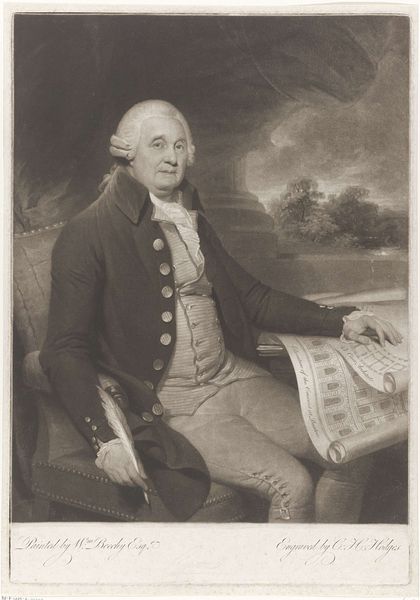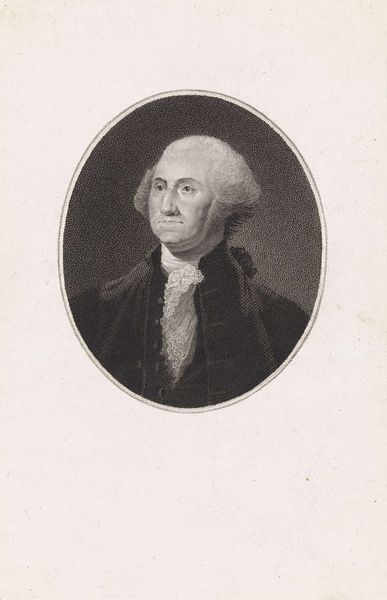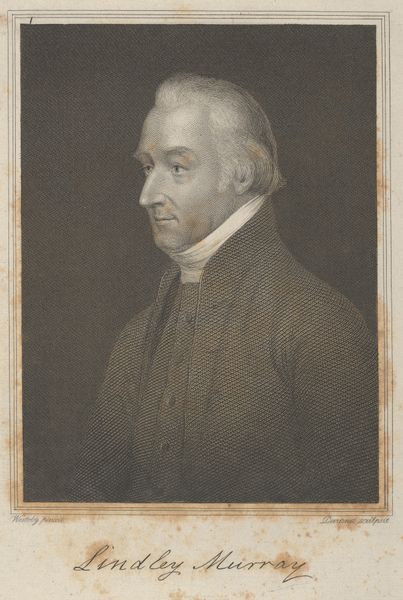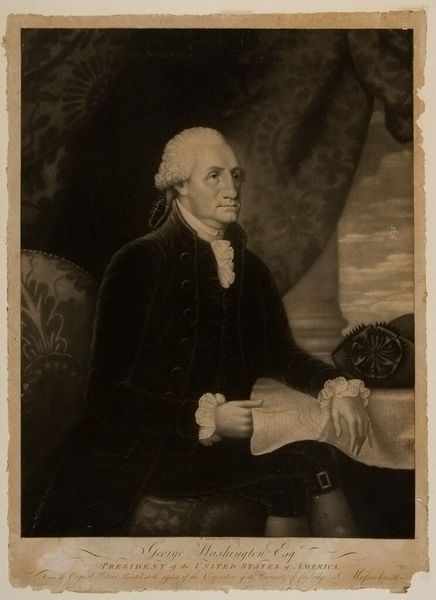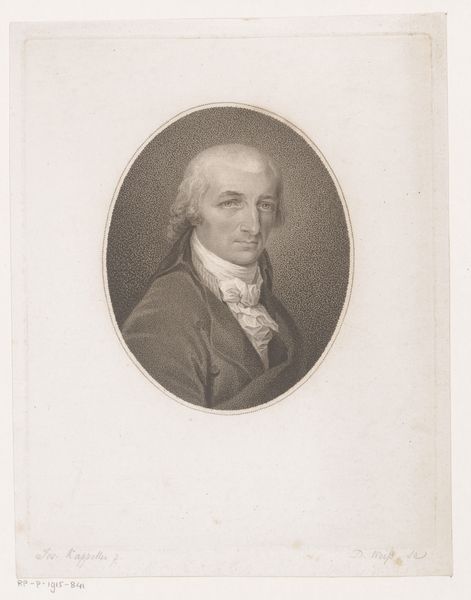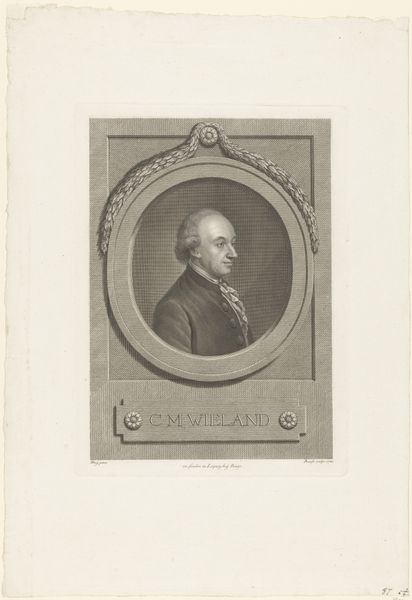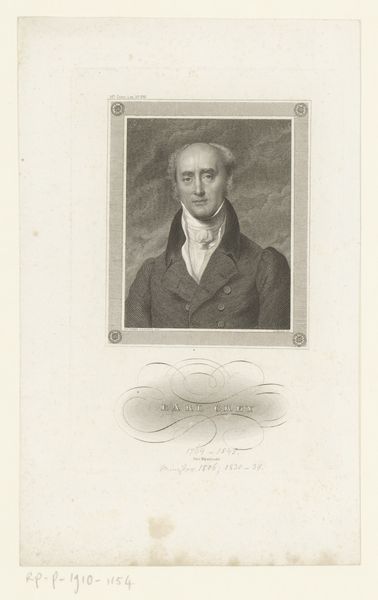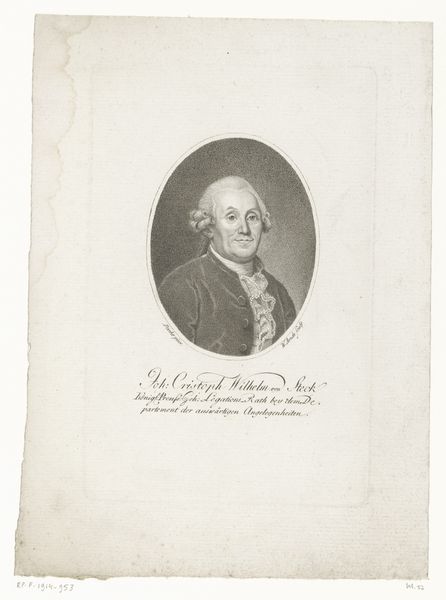
drawing, print, engraving
#
portrait
#
drawing
#
16_19th-century
#
neoclassicism
# print
#
19th century
#
men
#
portrait drawing
#
engraving
Dimensions: plate: 9 3/4 x 6 9/16 in. (24.8 x 16.7 cm)
Copyright: Public Domain
Curator: This print, titled "John Jay," was completed in 1834, after a painting by Stuart Trumbull. The engraving is by A. H. Ritchie. Editor: The meticulous detail in the engraving process gives it a serious and somewhat austere air, doesn't it? Look at the crisp lines creating the texture of his coat and the weighty stillness it lends to the figure. Curator: Absolutely. And context is crucial here. This isn’t just a portrait, it's a carefully constructed image of John Jay, one of America’s Founding Fathers. We see an attempt to depict power through representation. Editor: Power is visually asserted through the symbols, no doubt. The books signal intellect and the draped fabric speaks of authority. Then there is his posture, suggesting he is at ease in his position. All of these were conventions of that period. Curator: Precisely! How does this idealized image of a powerful, white, male figure shape our understanding of early American leadership and governance? The whiteness, the access to books, the air of distinguished intellect-- all historically gatekept from other populations. What stories aren’t we seeing because of this limited viewpoint? Editor: These symbolic choices work on a conscious and unconscious level. Books will almost always signify "wisdom," while classical drapery implies tradition and legitimacy, tying this new republic to classical ideals. The engraver is not simply making an aesthetic choice; he is channeling powerful and time-tested symbolic forms. Curator: But how might we destabilize this inherited vision? How do we make space for understanding Jay's legacy with a critical view? Acknowledging the narratives embedded within these visual symbols allows for a broader dialogue about the complexities of our past. Editor: Indeed. We can explore the narratives behind and beyond these visual clues. Appreciating the intended message and considering all of the implications and possibilities beyond it seems like an insightful exercise, overall. Curator: Agreed, exploring these layered narratives offers valuable insight into the way the image shapes not only our understanding of the past but how the symbols persist to influence how power operates today.
Comments
No comments
Be the first to comment and join the conversation on the ultimate creative platform.
